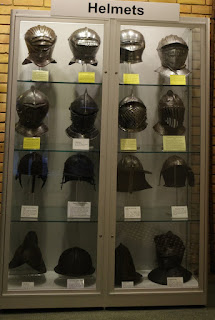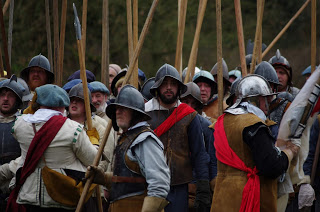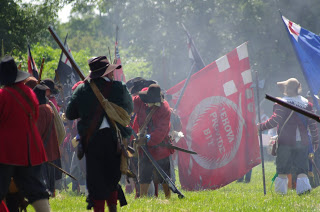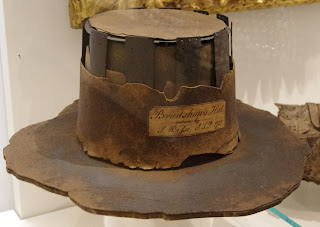Battle of Cheriton, 29th March 1644
The William Waller campaigns continue...a saga of manoeuvre and counter manoeuvre.
Background
After the Battle of Alton (and the taking of Arundel by Waller), the two armies went into winter quarters. Hopton overwintered in Winchester where he was joined by a contingent of the King's Oxford Army under the command of the Earl of Forth. Forth had superiority but Hopton retained operational command (on account of Forth having bad gout).
Waller's Southern Association was bolstered by a cavalry brigade from the Earl of Essex's Army, under the command of Sir William Balfour.
In March, Parliamentarian forces began to muster near Petersfield, with a view to march on Hopton. Hopton had news of the movements of the London Brigade and marched to intercept them. the London Brigade got wind of the Royalist advance and withdrew to join Waller.
Waller marched to Alresford in order to cut off Hopton's route back to Winchester . Balfour led the advance, the Parliamentarian foot were in the centre, and the Waller's cavalry brought up the rear.
Meanwhile, Hopton led the Royalist vanguard in occupying the position at Alresford.
Balfour took up position to the east of Alresford; Forth caught up with Hopton and took command at Alresford, the rest of the Royalist army occupied Tichborne Down. Waller, and the bulk of the Parliamentarian army took up post south of the main Royalist force.
Waller had been outmanoeuvred.
The Battle
The morning of the 29th saw minor redeployments of the two main armies, they now faced one another on opposite ridge lines to the west of Cheriton Woods.
Let battle commence...
Waller initially took Cheriton Woods, Hopton realised the importance of the Woods, and after fierce fighting took them. The fighting wasn't helped by both sides choosing the same field sign (oopsies!).
Having secured the Woods, Hopton wanted to attack the parliamentarian right flank. However, the Earl of Forth had different ideas, preferring a defensive strategy. There was intermittent skirmishing, before it kicked off properly around Hinton Ampner. There followed a farcical tale of burning houses, a change of wind direction, coupled with a better Parliamentarian command structure led to the Royalists being routed with heavy losses.
Meanwhile, the Royalists took on the Parliamentarian cavalry in the centre of the battlefield - this was a bloody confrontation with heavy losses on both sides.
Clearly the game was up for the Royalists who withdrew to Basing House; Waller marched on Winchester which surrendered (with the exception of the castle). The remnants of Hopton's Southern Army were absorbed into the Oxford Army.
What's There Now?
There has been much debate as to where the battlefield actually was, recent metal detecting finds have shifted the battlefield back to it's traditional location, with the memorial located at the centre of the Royalist lines.
The battlefield is easily accessed by footpaths, a battlefield walk leaflet available to download from Visit Winchester
The nearby National Trust property at Hinton Ampner has an additional information board close to it's carpark, it offers good views of the battlefield for those unable to access the footpaths.
The Battle has it's own website, which at the time of writing is 'undergoing refurbishment.
Selected Bibliography
Cheriton 1644: The Most Unfortunate Battaile of Alresforde J.Dixon, Partizan Press
Postcodes for SatNavs
Memorial & info board 3 SO24 0HR
Hinton Arms info board 1 SO24 0NH
Broad Lane info board 2 SO24 0JY
Street parking for access to info board 4 Lower Lamborough Lane SO24 0QF
Hinton Ampner SO24 0LA
Background
After the Battle of Alton (and the taking of Arundel by Waller), the two armies went into winter quarters. Hopton overwintered in Winchester where he was joined by a contingent of the King's Oxford Army under the command of the Earl of Forth. Forth had superiority but Hopton retained operational command (on account of Forth having bad gout).
Waller's Southern Association was bolstered by a cavalry brigade from the Earl of Essex's Army, under the command of Sir William Balfour.
In March, Parliamentarian forces began to muster near Petersfield, with a view to march on Hopton. Hopton had news of the movements of the London Brigade and marched to intercept them. the London Brigade got wind of the Royalist advance and withdrew to join Waller.
View of the battlefield from the memorial, Cheriton Wood on the left.
Waller marched to Alresford in order to cut off Hopton's route back to Winchester . Balfour led the advance, the Parliamentarian foot were in the centre, and the Waller's cavalry brought up the rear.
Meanwhile, Hopton led the Royalist vanguard in occupying the position at Alresford.
Balfour took up position to the east of Alresford; Forth caught up with Hopton and took command at Alresford, the rest of the Royalist army occupied Tichborne Down. Waller, and the bulk of the Parliamentarian army took up post south of the main Royalist force.
Waller had been outmanoeuvred.
The Battle
The morning of the 29th saw minor redeployments of the two main armies, they now faced one another on opposite ridge lines to the west of Cheriton Woods.
Let battle commence...
Waller initially took Cheriton Woods, Hopton realised the importance of the Woods, and after fierce fighting took them. The fighting wasn't helped by both sides choosing the same field sign (oopsies!).
Having secured the Woods, Hopton wanted to attack the parliamentarian right flank. However, the Earl of Forth had different ideas, preferring a defensive strategy. There was intermittent skirmishing, before it kicked off properly around Hinton Ampner. There followed a farcical tale of burning houses, a change of wind direction, coupled with a better Parliamentarian command structure led to the Royalists being routed with heavy losses.
Meanwhile, the Royalists took on the Parliamentarian cavalry in the centre of the battlefield - this was a bloody confrontation with heavy losses on both sides.
Clearly the game was up for the Royalists who withdrew to Basing House; Waller marched on Winchester which surrendered (with the exception of the castle). The remnants of Hopton's Southern Army were absorbed into the Oxford Army.
What's There Now?
There has been much debate as to where the battlefield actually was, recent metal detecting finds have shifted the battlefield back to it's traditional location, with the memorial located at the centre of the Royalist lines.
The battlefield is easily accessed by footpaths, a battlefield walk leaflet available to download from Visit Winchester
Not quite sure that the cover image is accurate for a 1640s battle, probably best not to mention the symbols used on the walk map either (cavalry with shields, musketeers in chainmail). Somebody in the Winchester Tourist Board needs a good talking to!
The Battlefields Trust has an annotated OS map of the battlefield which can be downloaded free. I recommend that you use this in conjunction with the Visit Winchester walk leaflet. The battlefield is easily accessible by a number of public footpaths, coincidentally a number of decent pubs are situated along the route.
The second on Broad Lane near Primrose Cottages.
The nearby National Trust property at Hinton Ampner has an additional information board close to it's carpark, it offers good views of the battlefield for those unable to access the footpaths.
National Trust interpretation board at Hinton Ampner, OS Grid SU 5965 2763
The Battle has it's own website, which at the time of writing is 'undergoing refurbishment.
Selected Bibliography
Cheriton 1644: The Most Unfortunate Battaile of Alresforde J.Dixon, Partizan Press
Postcodes for SatNavs
Memorial & info board 3 SO24 0HR
Hinton Arms info board 1 SO24 0NH
Broad Lane info board 2 SO24 0JY
Street parking for access to info board 4 Lower Lamborough Lane SO24 0QF
Hinton Ampner SO24 0LA
If you enjoyed reading this, or any of the other posts, please consider supporting the blog.
Thanks.



















I followed the route a year ago this week. I can highly recommend it. It's a picturesque walk in its own right even without the historical interest. I sat and had my lunch on the bench by the memorial stone on one of the hottest days of the year, and captured that same view as you did. I realised on reflection I might have got a better impression if I'd have gone in March when there would be less foliage :-)
ReplyDeleteAgreed, it is very picturesque around there (a very different landscape from here in the Peak District). I think I prefer the area around the memorial, nice to be able to look out onto the battlefield without seeing the incursions of modern civilization.
DeleteMy local battle.. walked that battlefield a few times... must go again soon..
ReplyDeleteA very pretty part of the world.
Delete